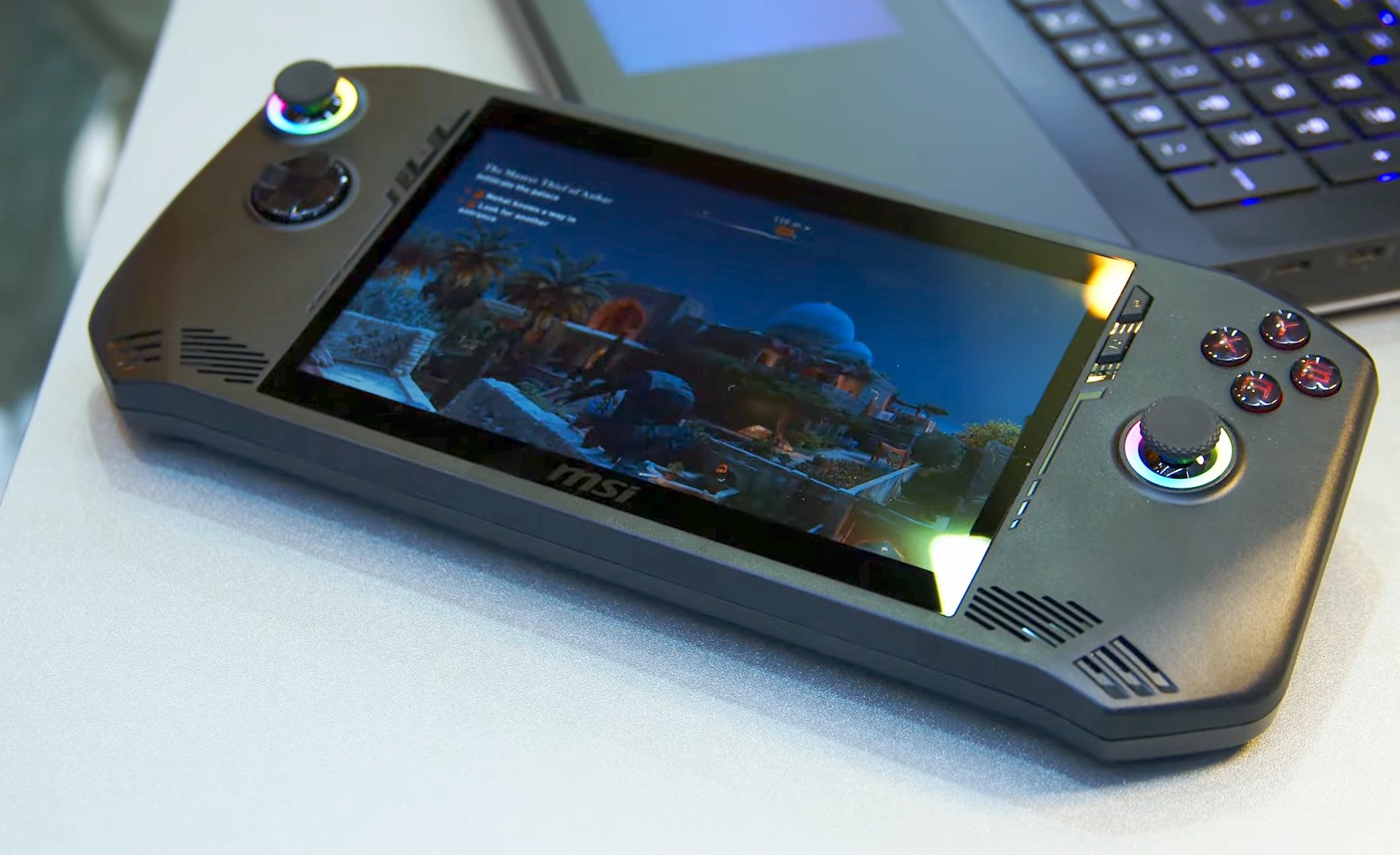When news broke that MSI was planning to launch a handheld Windows gaming PC later in 2024, one of the highlights of the MSI Claw was the supposed inclusion of a variable refresh rate (VRR) display to smooth out hitches in gameplay that might come from using the Intel Arc 8-Core iGPU in the Core Ultra 7 155H.
Now, according to a report by The Verge, MSI has confirmed that it means “variable” in the more literal sense — that it can be changed. Instead of an adaptive refresh rate, as offered by AMD’s FreeSync or Nvidia’s G-Sync, the MSI Claw A1M will allow users to select between a number of refresh rate options, similar to the Steam Deck and Steam Deck OLED.
Gamers will be able to switch between 48 Hz, 60 Hz, and 120 Hz on the MSI Claw. That’s a fair spread of the refresh rates you’ll be able to hit on the gaming handheld, depending on the game. However, it’s a far cry from the smooth, tear-free experience afforded by real variable refresh rate tech, as found in the Asus ROG Ally ($599.99 with the AMD Ryzen Z1 Extreme at Best Buy).
MSI, however, apparently argues that the Claw does feature variable refresh rate, somewhat mincing words to seemingly make the device seem more capable. The Asus ROG Ally, which is the only handheld gaming PC currently on the market with true variable refresh rate tech, is able to modulate its display’s refresh rate smoothly between 48 Hz and 120 Hz.
That’s not to say that the MSI Claw is dead on arrival because of the lack of true variable refresh rate. The non-granular, manual “variable” refresh rate option MSI and Valve have gone for works well with workarounds, like frame rate limiters, to get the smoothest possible gaming experience. Things like Intel’s XeSS, Nvidia DLSS, and AMD FidelityFX Super Resolution also work for hitting frame rate targets when the display is not capable of slowing itself down and speeding itself up to match the GPU’s performance.
If you’re after a gaming handheld, check out the supersized Lenovo Legion Go on Amazon.
My interest in tech started in high school, rooting and flashing my Motorola Defy, but I really fell down the rabbit hole when I realised I could overclock the i7 930 in my Gigabyte pre-built PC. This tinkering addiction eventually lead me to study product design in university. I think tech should improve the lives of the people using it, no matter the field. I like to read and write about laptops, smartphones, software and trends in technology.
#MSI #Claw #A1M #falls #short #Asus #ROG #Ally #ditching #VRR #display







